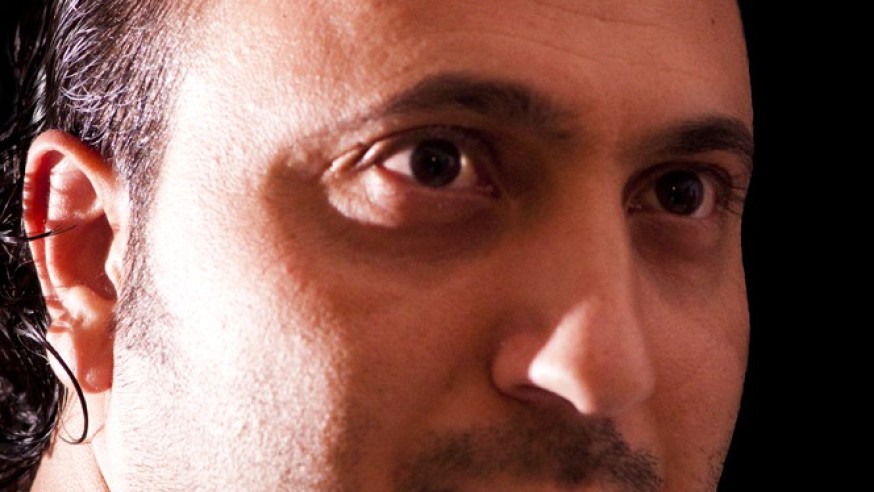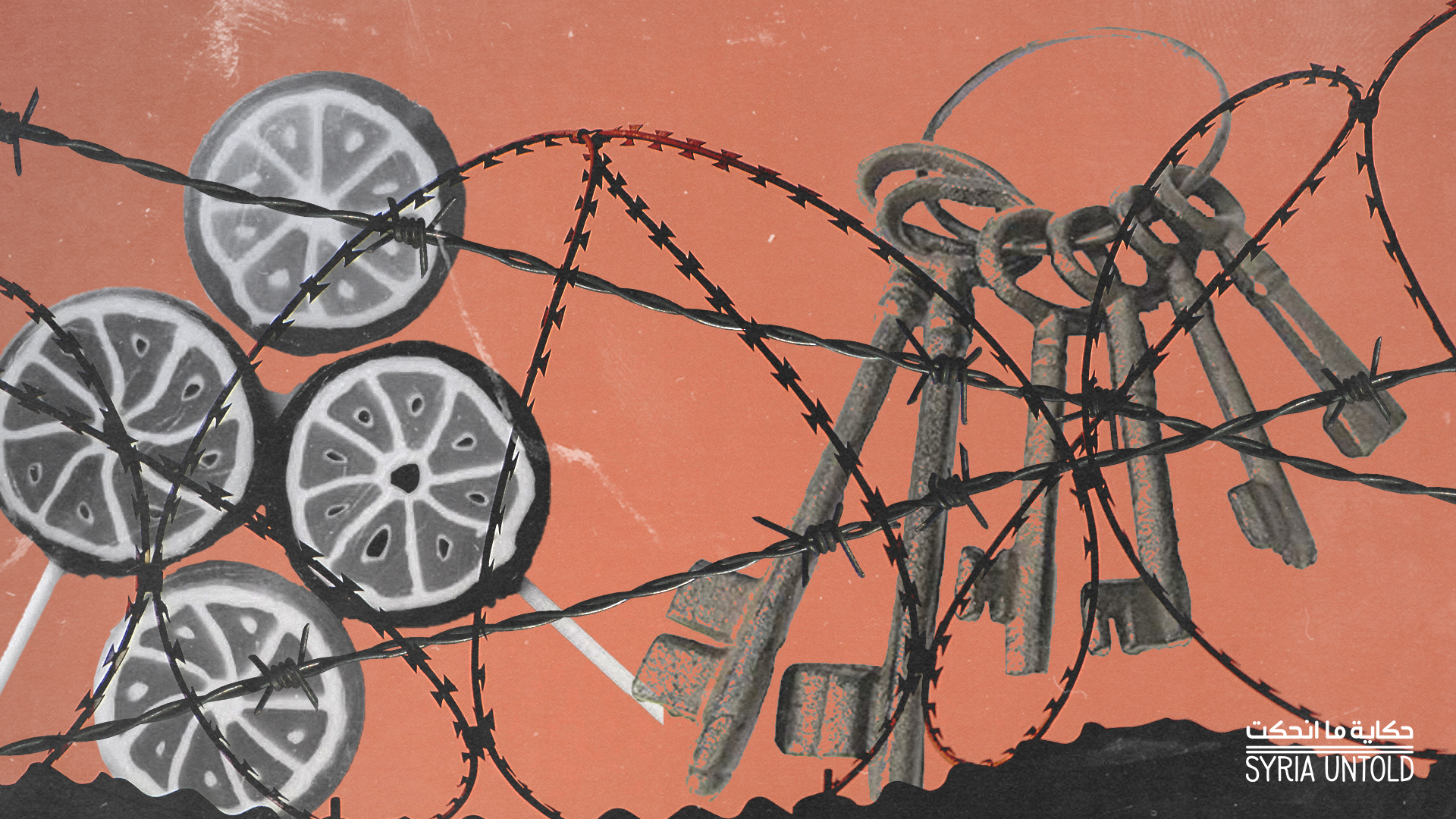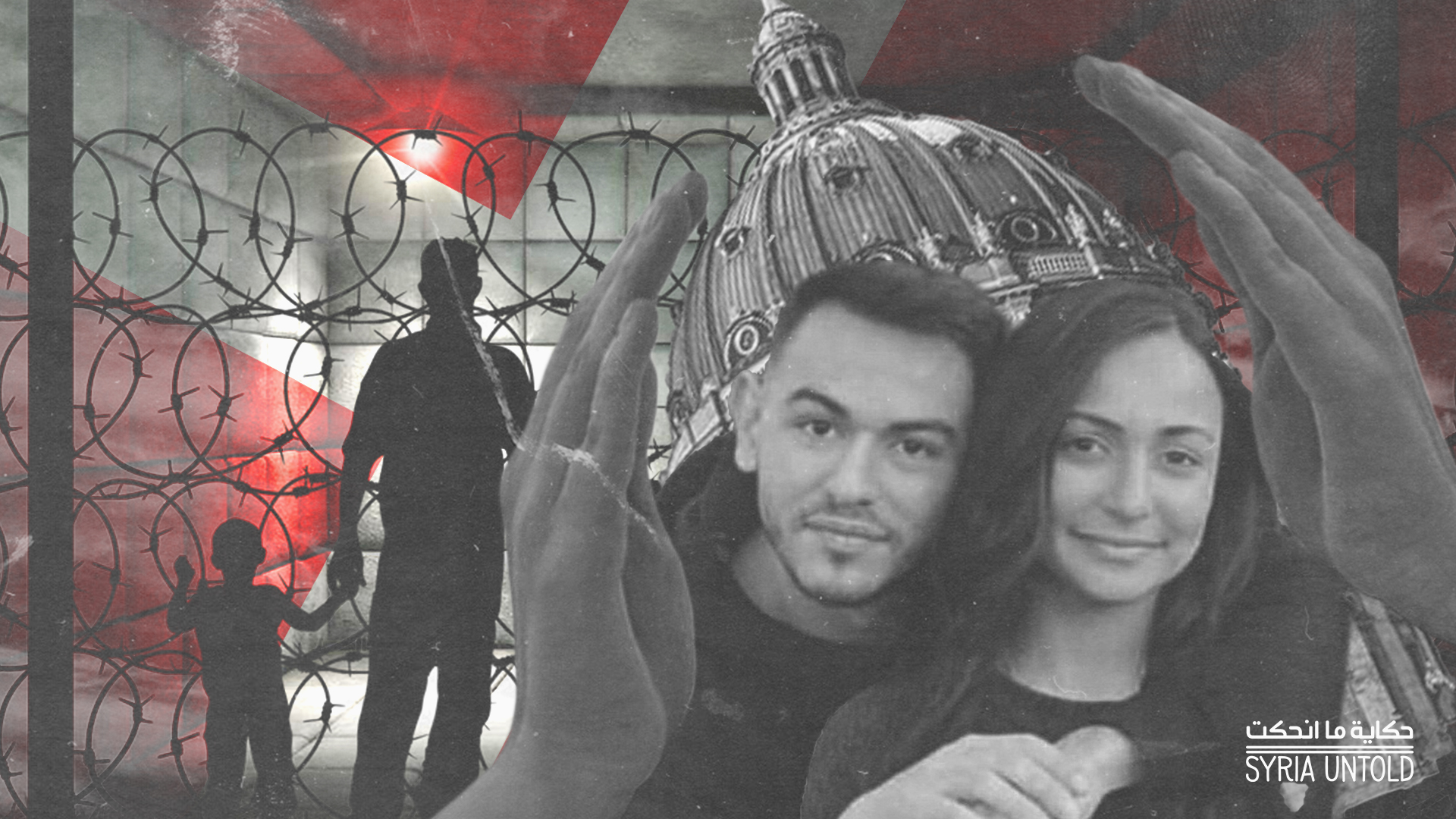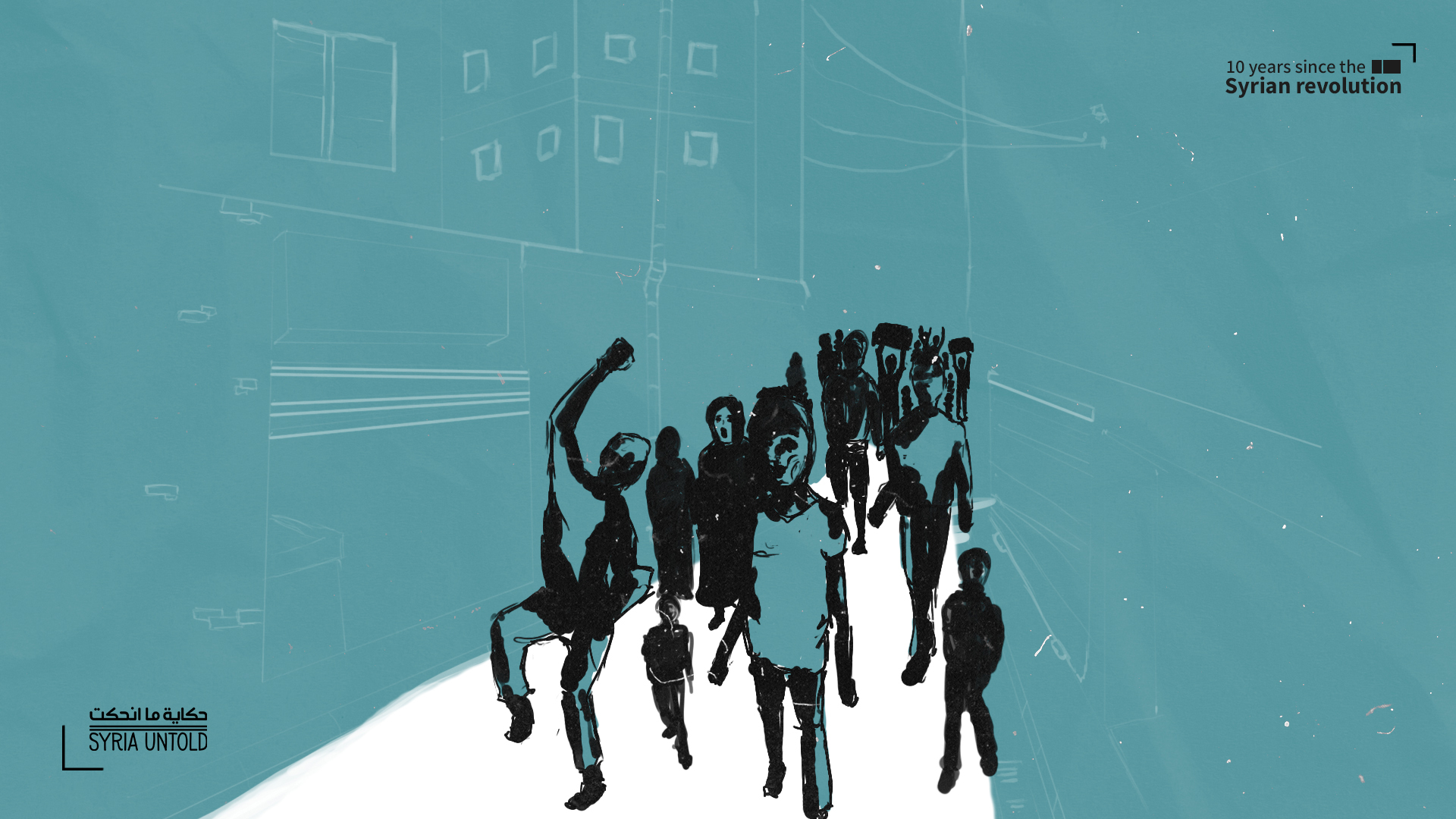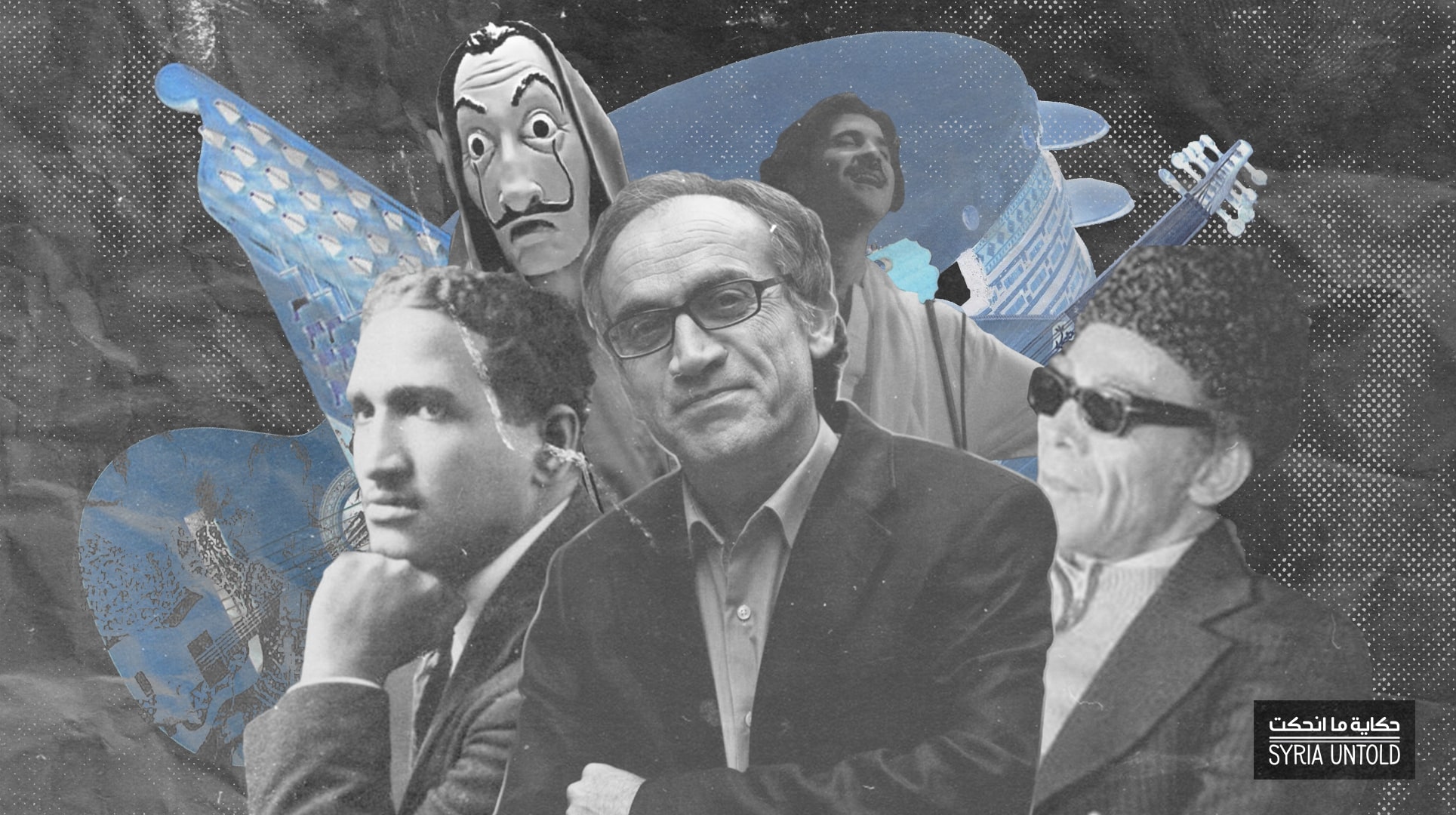SyriaUntold originally published this article in Arabic. Read it here.
In his book Sapiens: A Brief History of Humankind, author Yuval Noah Harari tackles the ability of a “fiction” or “story” to work wonders when people believe in it. Fiction transforms our belief in anything (be it a nation, religion, an idea or a nationality) into reality, one that is more powerful and tangible than facts we touch with our own hands.
Nationalism, religion, the dollar, banks and the law are all symbolic and imaginary matters, yet our collective belief in them turns them into reality—that is, until we lose our faith in them and they become a simple mirage. Ancient history is rife with such examples.
It is in this vein that we discuss what has become known in Syrian literature as the “democratic political alternative” to the tyrannical regime. We all, unfortunately, failed to build this alternative, let alone present it to ourselves or to the international community.
Some may argue that it is the prevailing international and regional climate that failed to pave the way for the overthrow of the regime, regardless of the availability of an alternative. The evidence people point to in such an argument is that there are a number of tyrannical dictators elsewhere who were overthrown before any alternative materialized. In some cases, the alternatives only appeared following the departure of the tyrants.
This is a subject that is open to wide discussions, given the difference between one country and another. For example, civil society and the internal opposition already had a strong presence in Tunisia and Egypt. Meanwhile, the tribal community and its alliances were very present in Yemen. For its part, Libya is similar to Syria given the political desertification imposed by the authoritarian regimes in the two countries.
A decade on, how can we work to free Syria’s detainees?
16 April 2021
Denmark is revoking residence permits from Syrian asylum seekers. This didn’t come out of nowhere
19 April 2021
‘The story’ of bringing down an authoritarian regime
At the beginning of the revolution, and especially in 2011, the Syrian population and elites were divided. While some believed that the first priority was to bring down the regime and then seek an alternative, others said that an alternative was necessary before any regime was overthrown, as they believed that a Syrian alternative had to be created or invented. They hoped against hope.
In the context of the importance Harari attaches to the role played by story or fiction, the Syrian elites’ inability to invent one for the people to rally around after the outbreak of the revolution has contributed to delaying the downfall of the regime.
This failure contributed to the fragmentation and dispersion of Syrians into multiple stories, and away from one solid story that could be built upon and bring together as many people as possible to form an alternative. How did this happen? And when?
Almost all experts and actors focusing on Syrian affairs (whether they are for or against the use of arms) agree that during the first months of the Syrian revolution, there was a virtual consensus among a large segment of Syrians who supported rising against the regime.
The vocabulary, slogans, demonstrations and activities of the revolution put forth or molded the aspects of a story that lured a great deal of people. This vocabulary focused on getting rid of tyranny, fighting corruption and achieving real and radical reforms. This happened roughly between March and June 2011. The story that emerged shaped a clear narrative that brought together most of those involved in the revolution. This could have set the stage for the presumed Syrian alternative.
In other words, political actors should have used these slogans within the framework of an action plan, one that could have been negotiated with the dictatorship to find a safe and smooth path toward change. Indeed, this is what these actors were attempting (for example: the Semiramis Conference and preparations for the formation of the National Coordination Committee) until a new factor broke this central narrative and contributed to the fragmentation of the Syrian story.
But before moving on to that moment of fragmentation, it should be noted that while the revolution preserved a story, or narrative, that received wide consensus, the regime’s narrative was fragmented as it became marred by confusion during these months. It seemed lost between conspiracy theories, the need for reforms, the rightful demands of the uprising and the Salafi Emirates. The regime did not have a convincing story, while the forces of change had a solid story and narrative.
If we want to start building anew and learning from our mistakes, then elites and actors at play should start the process of weaving a Syrian carpet from scattered stories and threads.
The regime’s lie of reform was subsequently revealed amid increased violence against protesters. And as foreign forces, both with and against the regime, joined the equation, two narratives started to emerge. These differing narratives divided the Syrian opposition along a stark line: one for arms and the other for peace.
A debate erupted between supporters of the hitherto solid story. One group wanted to change, rather than topple, the regime on the grounds that existing forces (both local and foreign) would not allow for the latter scenario. Another group believed that the regime must be toppled. In parallel, yet another narrative emerged, whereby the demonstrations and the peaceful movement alone were unable to overthrow the regime, and this is why weapons were needed.
On narratives of the Syrian revolution
15 March 2021
Remembering the Syrian revolution through song
09 April 2021
Supporters of the formerly unified narrative were subsequently divided between four narratives, each of which had its supporters and visions. Then supporters of the narrative of armament and regime overthrow were divided over the issue of an alliance with the Islamists, and then they split over the issue of which Islamists to forge alliances with. Are Ahrar al-Sham, Jaish al-Islam and Jabhat al-Nusra moderate and safe to approach? Is it possible to benefit from them tactically and militarily in the battle against the despotic regime, separately from the ideological side governing the minds of the supporters of these movements?
In addition to these widely disputed narratives, several others also began to appear over the religious and ethnic minorities, the countryside vs. the city and questions of alliance with political Islam and the forces supporting the revolution.
Each division and difference in views would reduce the number of those who supported one, unified narrative or story that could garner a general consensus and actually set the stage for a new Syria.
Meanwhile, following its confusion during the first couple of months, the regime maintained its narrative of fighting “terrorism” and a conspiracy against the “Axis of Resistance.” Over the course of a decade, we moved from a unified narrative or story of the revolution vs. confusion in the regime’s own narrative, toward a unified regime narrative vs. a fragmented revolutionary narrative. This made it impossible to bring together the largest possible number of Syrians around one story, hence the current impasse.
If we want to start building anew and learning from our mistakes—a desire that everyone understands and realizes the need for—then elites and actors at play should start the process of weaving a Syrian carpet from scattered stories and threads. This can be done by reading into this difference and fragmentation and meeting with all those who supported previous stories and narratives—those that broke away from the mother story. We can re-weave its threads into a central story to be reintroduced to Syrians, for them to believe in.
We shall go to all the supporters of these stories and narratives—no matter how small—and listen to them, to know what they have in common with supporters of other stories. Without a centralized narrative, isolated elites will just keep putting forth solutions based on illusions imposed from above.
Syrian people are spread over multiple and diverse geographies both inside and outside the country, which makes it difficult to listen to, assemble and combine their many stories into one solid narrative. Here lies the challenge, but who said that the road to change was easy? What’s important is to start.


